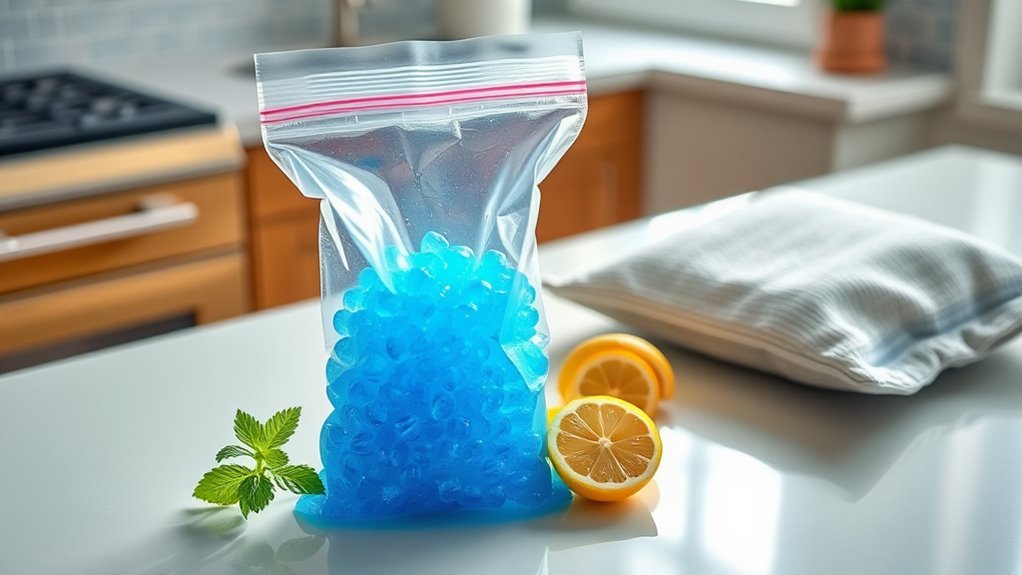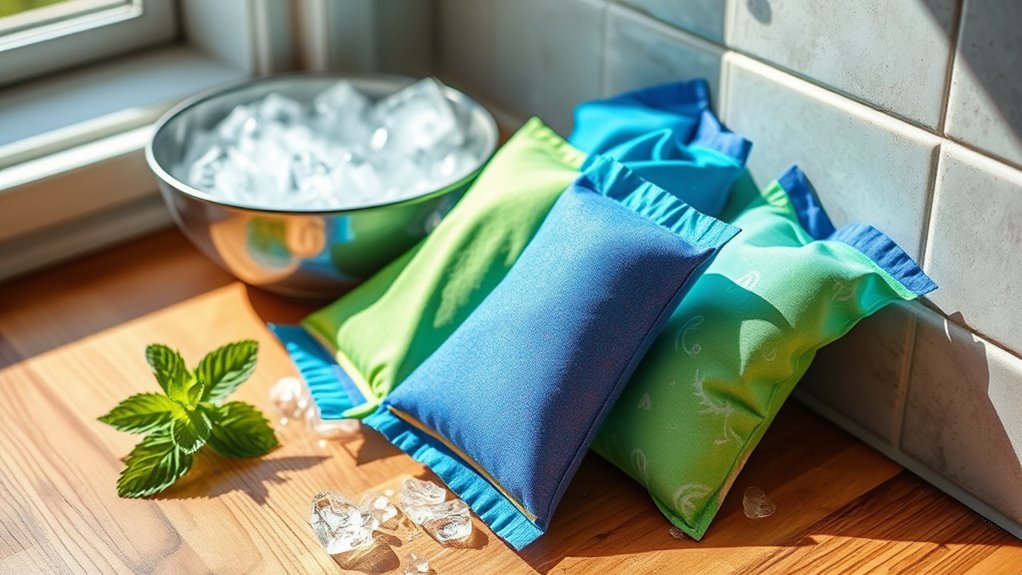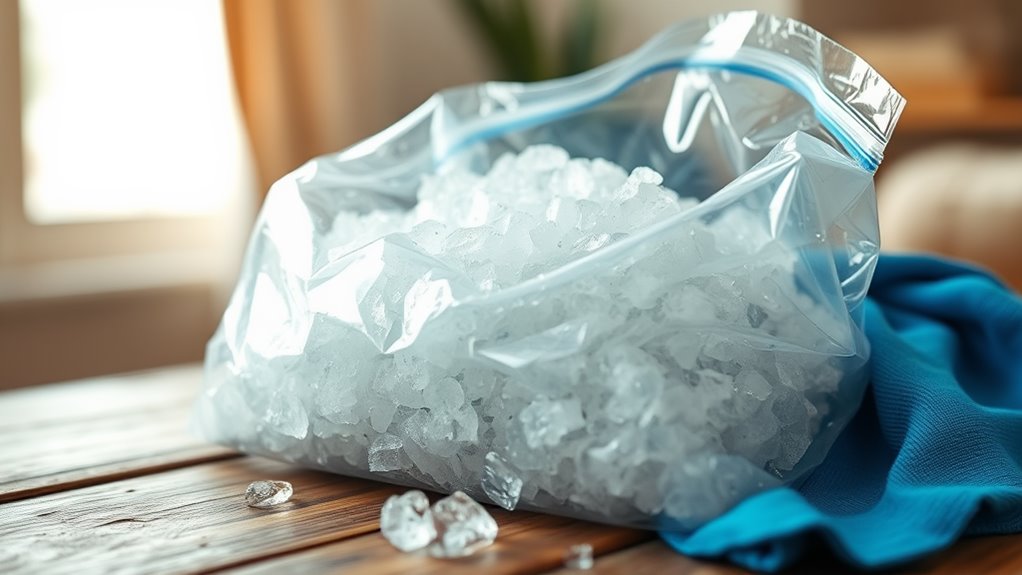Why You Should Never Use a Store-Bought Ice Pack Again!
Store-bought ice packs might look convenient, but they’re often pricey, wasteful, and filled with harmful chemicals. Homemade ice packs are customizable, cost-effective, and just as effective, if not better! Plus, making your own encourages creativity and resourcefulness while reducing plastic waste. You can even create herbal compresses for a natural touch. By opting for DIY solutions, you’re not just saving money, you’re also helping the environment. Discover more on why homemade options are the way to go!
The Benefits of Homemade Ice Packs
While you might be tempted to grab a store-bought ice pack, making your own can offer several advantages that are hard to ignore.
First off, you get to customize the size and shape, ensuring it fits perfectly on your injury. You’ll also enjoy the satisfaction of creating something useful—something that connects you to your home and your community.
Plus, homemade ice packs can be made with everyday items around you, fostering a sense of resourcefulness. You’ll likely find that they’re just as effective, if not more so, than their commercial counterparts.
Cost-Effectiveness of DIY Solutions
Creating your own ice packs can save you money without sacrificing effectiveness. When you make ice packs at home, you’re not just cutting costs; you’re also tapping into your creativity and resourcefulness.
Think about it—using common household items means you won’t have to spend on overpriced store-bought options that may not even work as well. Plus, when you share your DIY creations with friends and family, you bring everyone together, fostering a sense of community.
By choosing a cost-effective solution, you’re not only being smart with your budget but also showing that you care about quality and sustainability. Embrace the satisfaction of creating something useful and save money while you’re at it!
Your wallet—and your loved ones—will thank you.
Step-by-Step Guide to Creating Your Own Ice Packs
If you’re looking for a simple way to make your own ice packs, you’re in luck! Creating your own ice packs isn’t only easy but also a fun project that connects you with others who value DIY solutions.
Here’s what you’ll need:
- A sturdy resealable plastic bag
- Water
- Rubbing alcohol
- A mixing bowl
- A freezer
Start by mixing two parts water with one part rubbing alcohol in your bowl.
Pour the mixture into your plastic bag, removing excess air before sealing.
Place the bag in the freezer for a few hours. Once frozen, you’ve got a flexible ice pack ready to soothe any aches.
Sharing your creations with friends can inspire them to ditch store-bought packs too!
Herbal Compresses: A Natural Alternative
Herbal compresses offer a soothing, natural alternative to traditional ice packs, harnessing the power of nature to relieve pain and inflammation. By using a mix of herbs like chamomile, ginger, or eucalyptus in a cloth, you create a comforting wrap that can bring warmth and healing.
When you apply it to sore muscles or injuries, you’ll feel the gentle relief wash over you. Plus, making these compresses together with friends or family can turn a simple therapeutic practice into a bonding experience.
You’re not just easing discomfort; you’re connecting with nature and those around you. Embracing herbal compresses not only nurtures your body but also fosters a sense of community and well-being that store-bought options simply can’t provide.
Environmental Impact of Store-Bought Ice Packs
While herbal compresses provide a natural and eco-friendly way to soothe aches, store-bought ice packs often come with hidden environmental costs. When you rely on these products, you mightn’t realize how they contribute to pollution and waste.
Consider the following impacts:
-
Plastic waste: Most ice packs are made from plastic, which takes centuries to decompose.
-
Chemical leaching: Many contain harmful substances that can seep into the environment.
-
Energy consumption: Manufacturing and transporting these packs require significant energy resources.
-
Landfill overflow: Discarded packs contribute to overflowing landfills.
-
Single-use mentality: Their convenience promotes a throwaway culture.
Frequently Asked Questions
Can Homemade Ice Packs Be Used for Heat Therapy as Well?
Yes, homemade ice packs can be repurposed for heat therapy! Simply heat them in warm water or a microwave, and you’ve got a cozy, customizable solution for soothing sore muscles or relieving tension. Enjoy the comfort!
How Long Do Homemade Ice Packs Last in the Freezer?
Homemade ice packs typically last about 2 to 4 hours in the freezer before they start to lose their coldness. Just make sure you seal them well, so they stay effective for your needs!
Are There Any Safety Concerns With Using DIY Ice Packs?
Yes, there are safety concerns with DIY ice packs. Ensure you use safe materials; avoid leaks and harmful substances. Always wrap the pack in a cloth to protect your skin from extreme cold. Stay safe and enjoy!
What Materials Should I Avoid When Making Ice Packs?
When making ice packs, avoid materials like raw eggs, alcohol, or any toxic substances. These can leak or burst, causing harm. Stick to safe items like water, rice, or gel for effective and secure options.
How Do I Clean and Maintain My Homemade Ice Packs?
To clean and maintain your homemade ice packs, just wipe them down with a damp cloth and mild soap. Store them in a cool, dry place to keep them fresh and ready for your next use.





